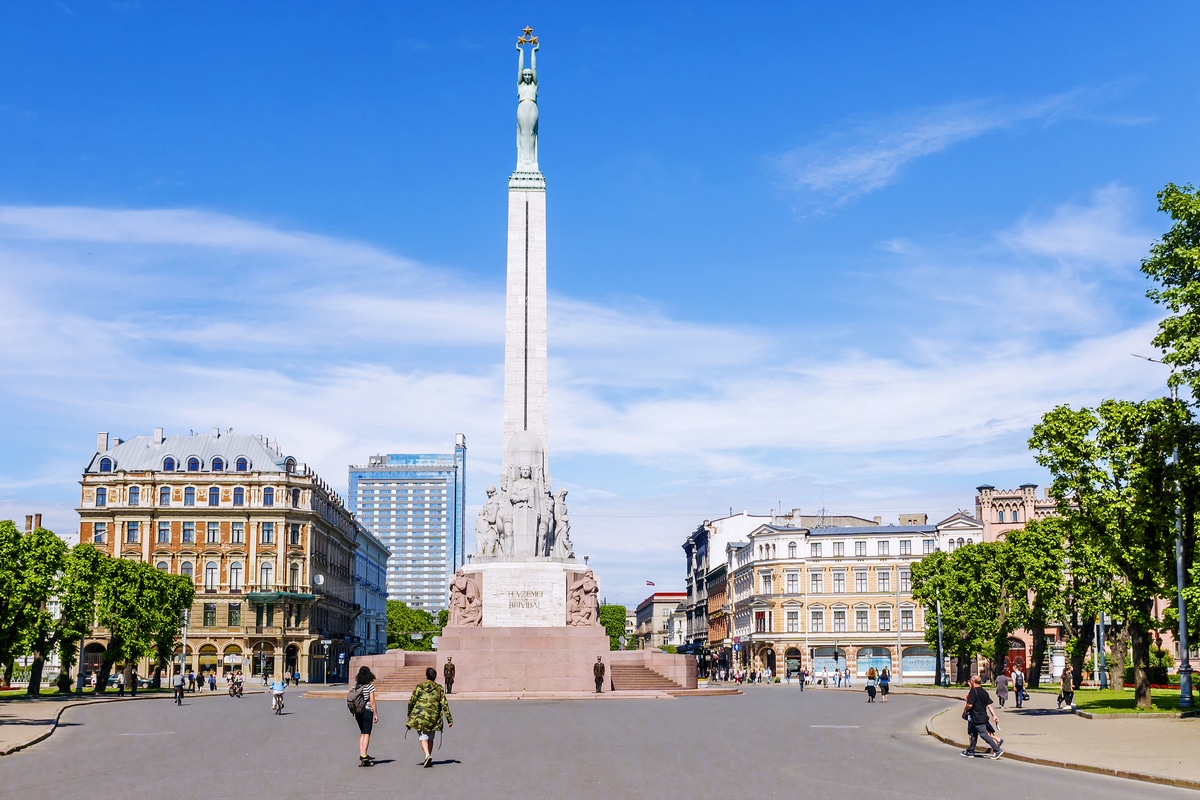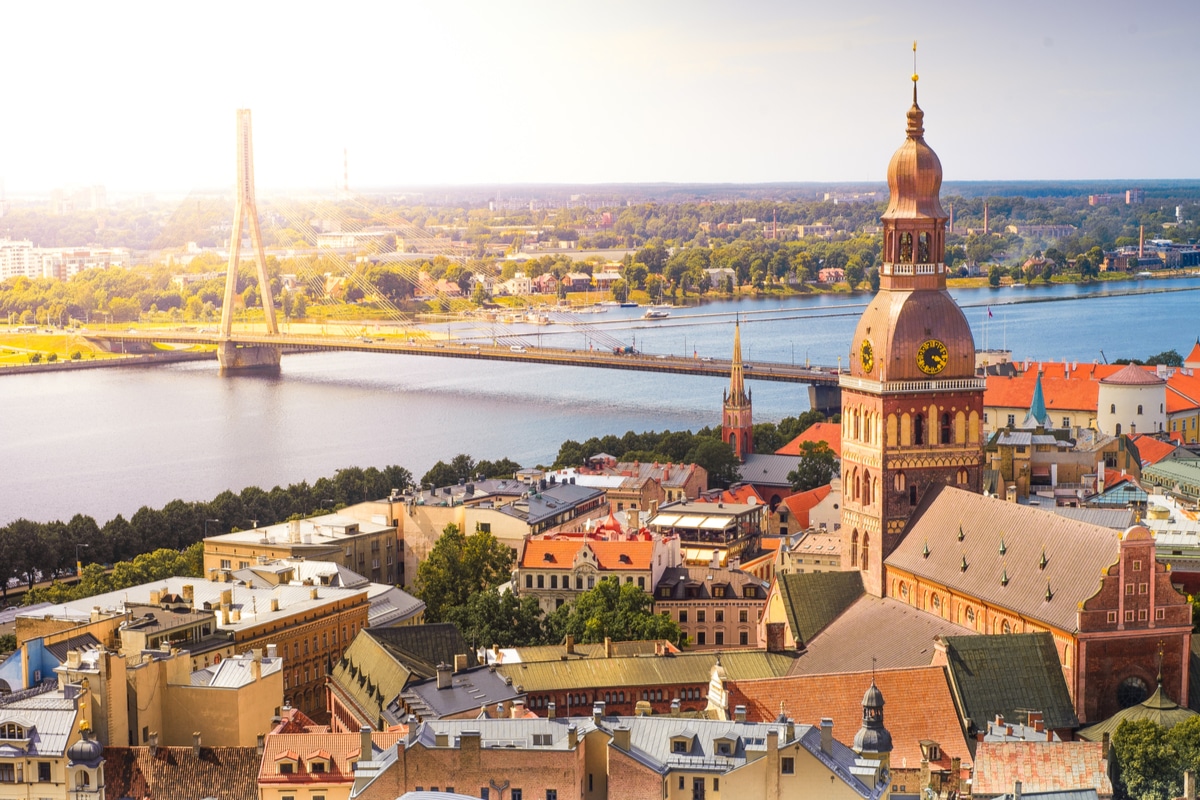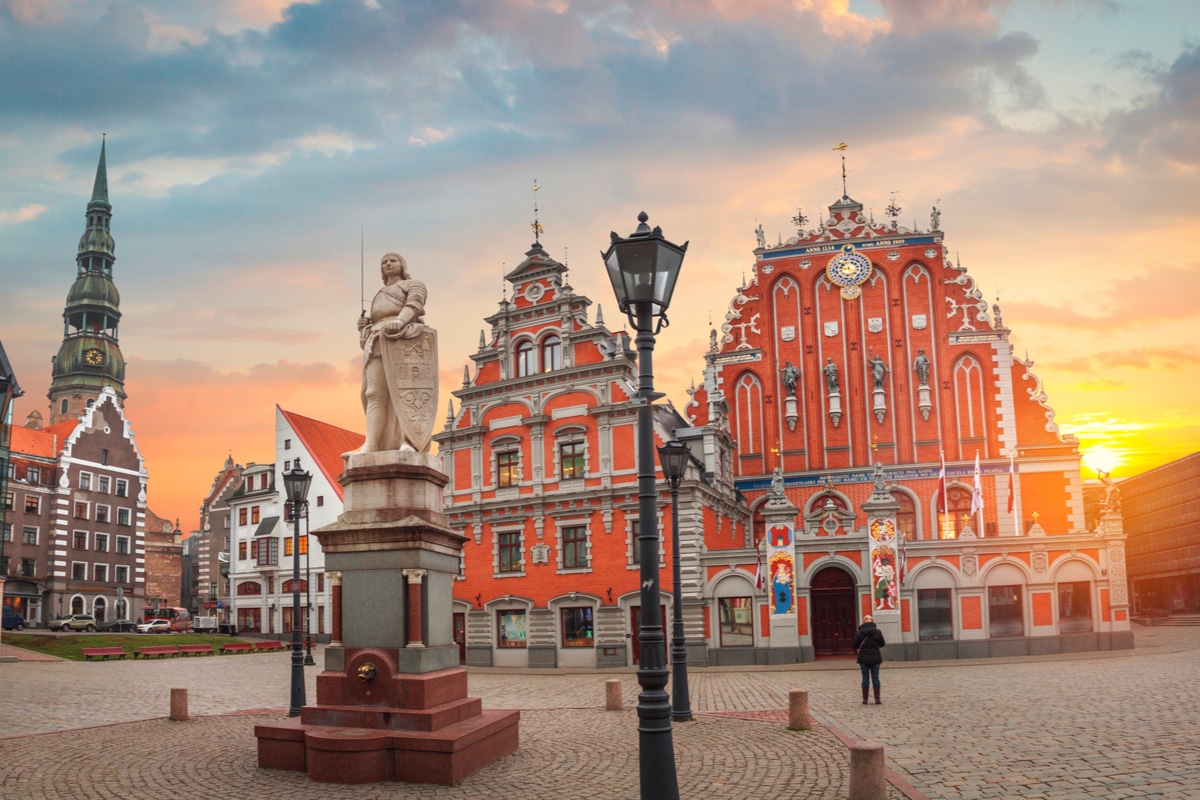Freedom Monument
Latvia has a long and, above all, eventful history. The Freedom Monument in the city centre of Riga stands for an important and exciting time in Riga's history. To this day, the Freedom Monument is a symbol of independence for Latvians and also a popular meeting place.

Statue of Liberty of a special kind
With a total height of 42 meters, the monument already impresses visitors to Riga from afar. Thanks to its height, it is also suitable as an orientation point. In total, the Statue of Liberty consists of 56 individual sculptures. The pedestal in the form of a 19-meter-high obelisk is crowned by the large statue Allegory of Freedom, which holds three stars in its hands. Each star represents one of the three historical regions of Latvia. The Latvians affectionately call the Statue of Liberty Milda. Facing west, the allegory is one of numerous figures of the monument that turns away from the east, only one figure of the pedestal faces east and this one keeps its head lowered and is put in chains.
While Riga was the capital of the Latvian SSR and under the rule of the Union of Soviet Socialist Republics, however, the monument was interpreted differently by those in power. For Latvians, the Statue of Liberty has always been a symbol of Latvian independence, which lasted briefly, only to be followed by many years before Latvia was able to gain independence once again.
The history of the Freedom Monument
The Freedom Monument was erected during the first period of Latvian independence, which unfortunately was short-lived. Between 1910 and 1915, the square was adorned with an impressive equestrian statue of Peter the Great. In 1918, the Republic of Latvia was established, resulting from a growing national sentiment among Latvians. Especially in the 1920s, Latvia also achieved an economic and cultural prosperity that could not be imagined before. In the years between 1931 and 1935 the Freedom Monument was built, which is located on today's Freedom Boulevard. Financed by donations from the population and designed by Ernests Štālbergs and realized by the sculptor Kārlis Zāle, the monument has survived the times of renewed occupation by Germany and the Soviet Union with a lot of luck.
After the Second World War, there were plans to demolish the monument, but the artist and student of Kārlis Zāle, Vera Muchina fought for its preservation. During Russian rule, the work was not taken down due to its artistic value, but a Lenin Monument was erected opposite it, which, unlike the Latvian Statue of Liberty, faces east.
The Freedom Monument today
Since Latvia's independence was restored in 1990, the Freedom Monument has become not just a monument for Latvians, but a place that keeps history alive. Latvian wedding couples lay flowers here. The annual song festival takes place at the foot of the Statue of Liberty, rallies are held here, and schoolchildren and students celebrate their graduation here. But politicians from all over the world also hold their speeches here. The importance of the monument is also clear, as a guard of honor is parked daily between 9 and 18 clock in front of the monument and this "guarded".



